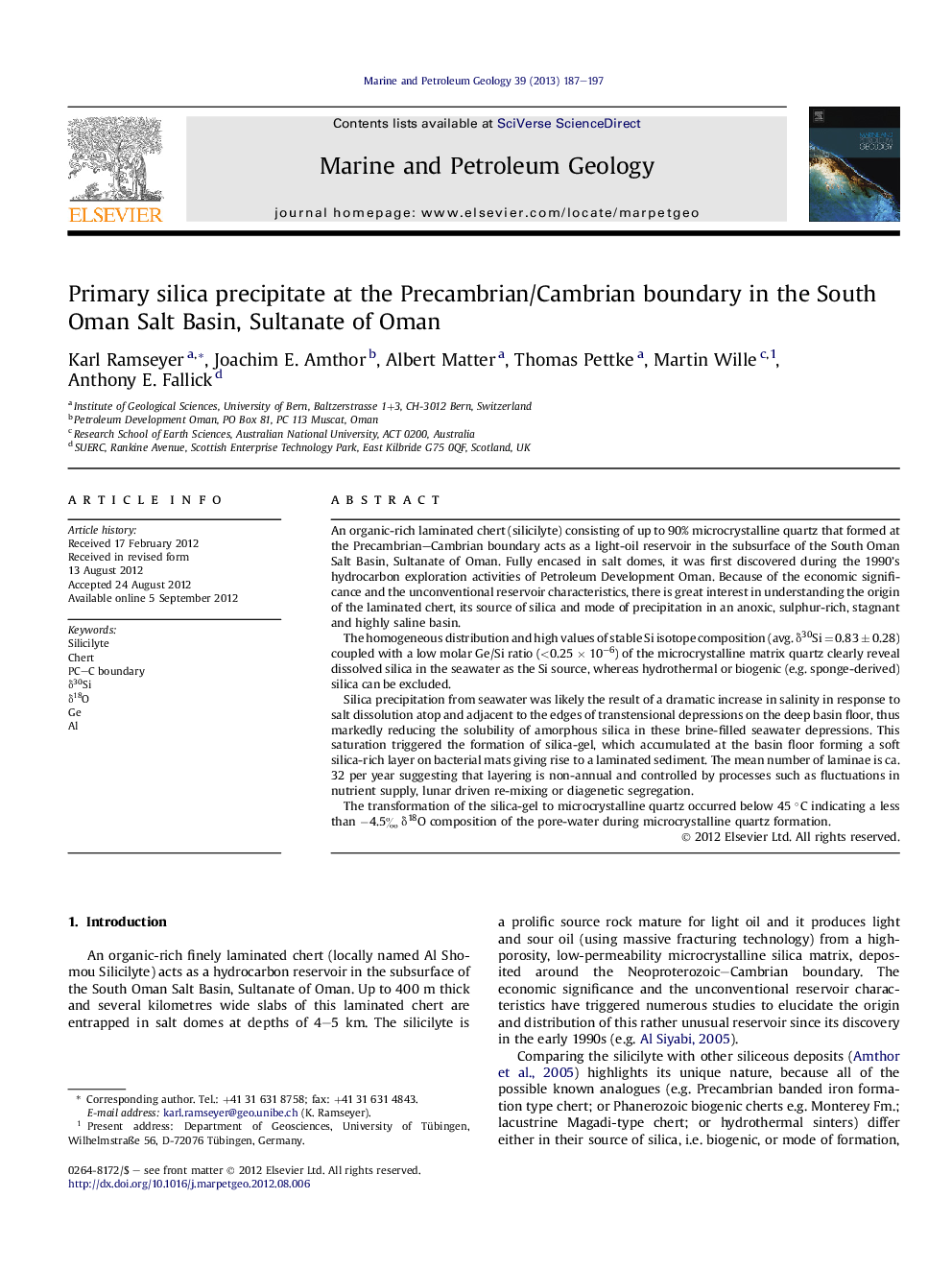| کد مقاله | کد نشریه | سال انتشار | مقاله انگلیسی | نسخه تمام متن |
|---|---|---|---|---|
| 4695900 | 1351641 | 2013 | 11 صفحه PDF | دانلود رایگان |
An organic-rich laminated chert (silicilyte) consisting of up to 90% microcrystalline quartz that formed at the Precambrian–Cambrian boundary acts as a light-oil reservoir in the subsurface of the South Oman Salt Basin, Sultanate of Oman. Fully encased in salt domes, it was first discovered during the 1990's hydrocarbon exploration activities of Petroleum Development Oman. Because of the economic significance and the unconventional reservoir characteristics, there is great interest in understanding the origin of the laminated chert, its source of silica and mode of precipitation in an anoxic, sulphur-rich, stagnant and highly saline basin.The homogeneous distribution and high values of stable Si isotope composition (avg. δ30Si = 0.83 ± 0.28) coupled with a low molar Ge/Si ratio (<0.25 × 10−6) of the microcrystalline matrix quartz clearly reveal dissolved silica in the seawater as the Si source, whereas hydrothermal or biogenic (e.g. sponge-derived) silica can be excluded.Silica precipitation from seawater was likely the result of a dramatic increase in salinity in response to salt dissolution atop and adjacent to the edges of transtensional depressions on the deep basin floor, thus markedly reducing the solubility of amorphous silica in these brine-filled seawater depressions. This saturation triggered the formation of silica-gel, which accumulated at the basin floor forming a soft silica-rich layer on bacterial mats giving rise to a laminated sediment. The mean number of laminae is ca. 32 per year suggesting that layering is non-annual and controlled by processes such as fluctuations in nutrient supply, lunar driven re-mixing or diagenetic segregation.The transformation of the silica-gel to microcrystalline quartz occurred below 45 °C indicating a less than −4.5‰ δ18O composition of the pore-water during microcrystalline quartz formation.
► We investigate the origin of a laminated organic-rich chert formed at the PC–C boundary.
► It consists of non-annual couplets composed of organic and siliceous sediment.
► The δ30Si isotopic values indicate a marine, non-biogenic silica source of the chert.
► Chert formed in 2-steps, first sub-sea salt dissolution triggered silica-gel precipitation.
► Then microcrystalline quartz crystallized from the silica-gel precursor at <45 °C.
Journal: Marine and Petroleum Geology - Volume 39, Issue 1, January 2013, Pages 187–197
